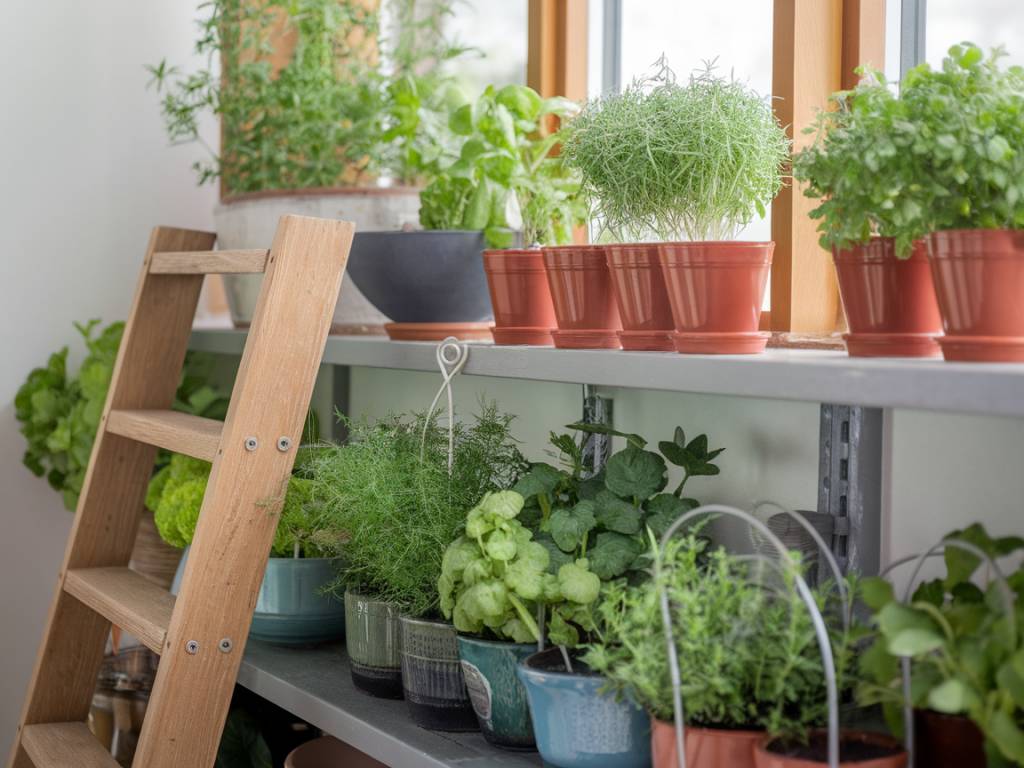Why Build a Sustainable Herb Garden at Home?
Imagine stepping into your kitchen, reaching out for a sprig of fresh oregano, and realizing you grew it yourself. It’s not just about taste—it’s about sustainability, self-reliance, and reconnecting with nature. A sustainable herb garden isn’t just a garden; it’s a lifestyle choice. It’s about reducing your environmental footprint while enjoying the freshest ingredients right at home. But how do you start? And more importantly, how do you keep it sustainable?
Let’s dig in—pun fully intended.
Choosing the Right Spot for Your Herb Garden
First things first: location. Herbs are surprisingly forgiving, but that doesn’t mean you can plant them anywhere and hope for the best. Most herbs—think basil, thyme, and parsley—thrive in sunny spots. Ideally, you’ll want a location that gets 6-8 hours of sunlight a day. For those living in apartments or homes without garden space, don’t worry. A windowsill or balcony will do the trick just fine.
No outdoor area at all? Consider indoor gardening with the help of grow lights. They’re a small investment but pay dividends in the long run, especially if you’re growing herbs year-round.
Picking Your Herbs Wisely
Not all herbs are created equal when it comes to care and growth habits. Start with herbs that are hardy and easy to grow:
- Basil: This is everyone’s go-to herb for a reason. It grows quickly and works beautifully in everything from pasta to salads.
- Thyme: A great companion to roasted dishes and soups, thyme is drought-tolerant and resilient.
- Mint: Be cautious with this one. It’s vigorous and can easily take over your garden if not properly contained.
- Parsley: Whether flat-leaf or curly, parsley is low-maintenance and versatile in cooking.
Once you’ve mastered these staples, branch out to more specialized herbs like rosemary, dill, or even lavender.
Choosing Sustainable Materials
If sustainability is your goal—let’s make it a priority, shall we?—the type of materials you use in your garden matters. Instead of buying brand-new pots, consider repurposing items you already have:
- Old tin cans or mason jars make fantastic small herb planters.
- Wooden crates or pallets can be transformed into raised garden beds.
- Compost from your kitchen waste provides a natural, nutrient-rich fertilizer.
Skip the plastic pots whenever possible and opt for biodegradable or upcycled alternatives. You’ll give new life to what would otherwise be waste while staying true to your sustainability goals.
Soil, Water, and Maintenance Tips
Healthy herbs start with healthy soil. Opt for an organic potting mix that drains well. Herbs don’t like waterlogged roots—they aren’t into the whole « spa day » thing.
Speaking of water, moderation is key. Overwatering is a common mistake for beginner herb gardeners. A good rule of thumb? Stick your finger into the soil. If the top inch feels dry, it’s time to water. For added sustainability, collect rainwater in a simple barrel or container and use it for your plants.
As for maintenance, herbs generally aren’t high-maintenance divas. Prune them regularly to encourage growth and prevent them from getting leggy. And when you’re harvesting? Snip just above a set of leaves for best results—it signals the plant to keep growing.
Go Organic: The Natural Way to Pest Control
One of the perks of growing your herbs at home is knowing exactly what goes on (or doesn’t go on) your plants. Commercial pesticides have no place in a sustainable herb garden. Instead, consider these natural solutions:
- Companion planting: Grow pest-repelling plants like marigolds or chives alongside your herbs.
- DIY sprays: Make your own pest-repellent using diluted neem oil or a mix of water, garlic, and a touch of dish soap.
- Handpicking: Yes, it’s as simple as it sounds. Spend a few minutes checking your plants and removing any unwanted visitors by hand.
Remember, a few bugs here and there aren’t catastrophic. As long as they don’t overwhelm your plants, they’re just part of the ecosystem you’re cultivating.
Incorporating Your Herbs into Everyday Life
Now for the fun part—using your herbs! A sustainable garden isn’t just about the growing process; it’s about integrating those fresh flavors into your daily routine. Here are a few ideas to inspire you:
- Mix freshly chopped basil or parsley into your morning omelet for a bright, herby kick.
- Infuse mint into water or tea for a refreshing, zero-calorie drink.
- Create your own homemade herb butter by blending softened butter with thyme, rosemary, and garlic.
- Make a quick herb-based marinade for your proteins using olive oil, lemon juice, and whatever you’ve got growing.
Not only does this reduce your reliance on store-bought options, but it also minimizes waste—because nothing tastes as satisfying as knowing you’re using what you’ve grown.
Scaling Your Sustainable Herb Garden
Once you’ve mastered the basics, expand your operation. Dream about making your own herbal teas? Start growing chamomile or lemon balm. Interested in crafting your own essential oils? Lavender and sage are phenomenal additions.
Alternatively, consider sharing your bounty. Gift small pots of mint or thyme to friends and family. Swap herbs with neighbors. Build a community around your gardening efforts—it’s one of the most rewarding aspects of this journey.
The Bigger Picture
Building a sustainable herb garden at home offers rewards that go far beyond a fragrant kitchen. It’s about fostering a deeper relationship with the earth, making conscious choices, and creating a greener future—one sprig of rosemary at a time. Plus, let’s be honest, is there anything more satisfying than telling your dinner guests, “Oh, that sage? Grew it myself.”?
The choice is yours, and the soil is waiting. Happy gardening!
